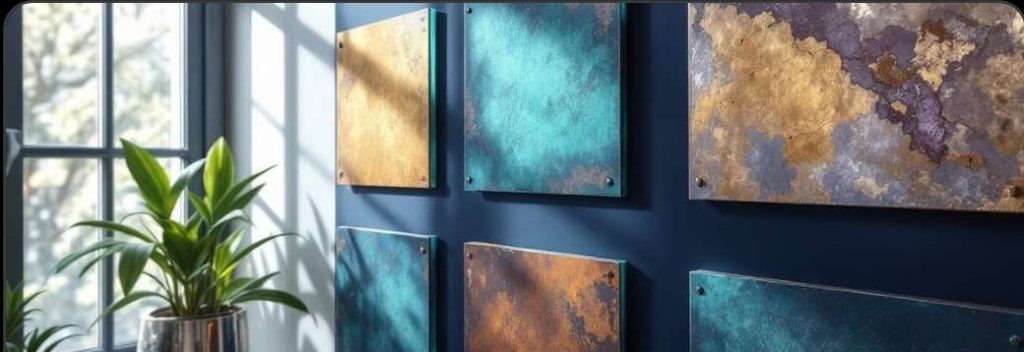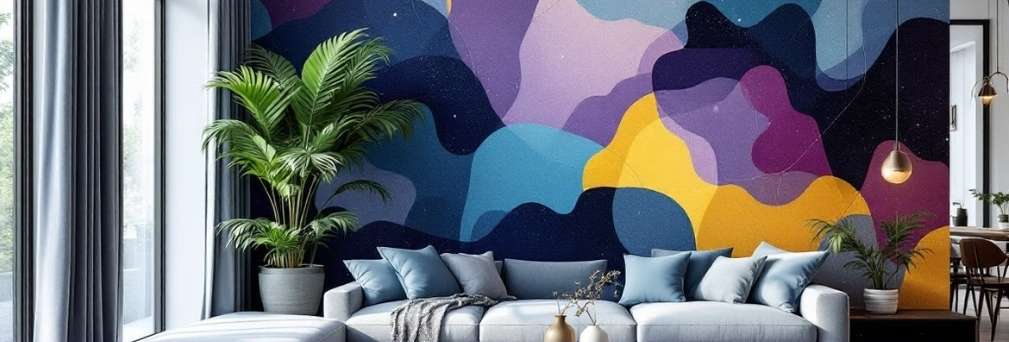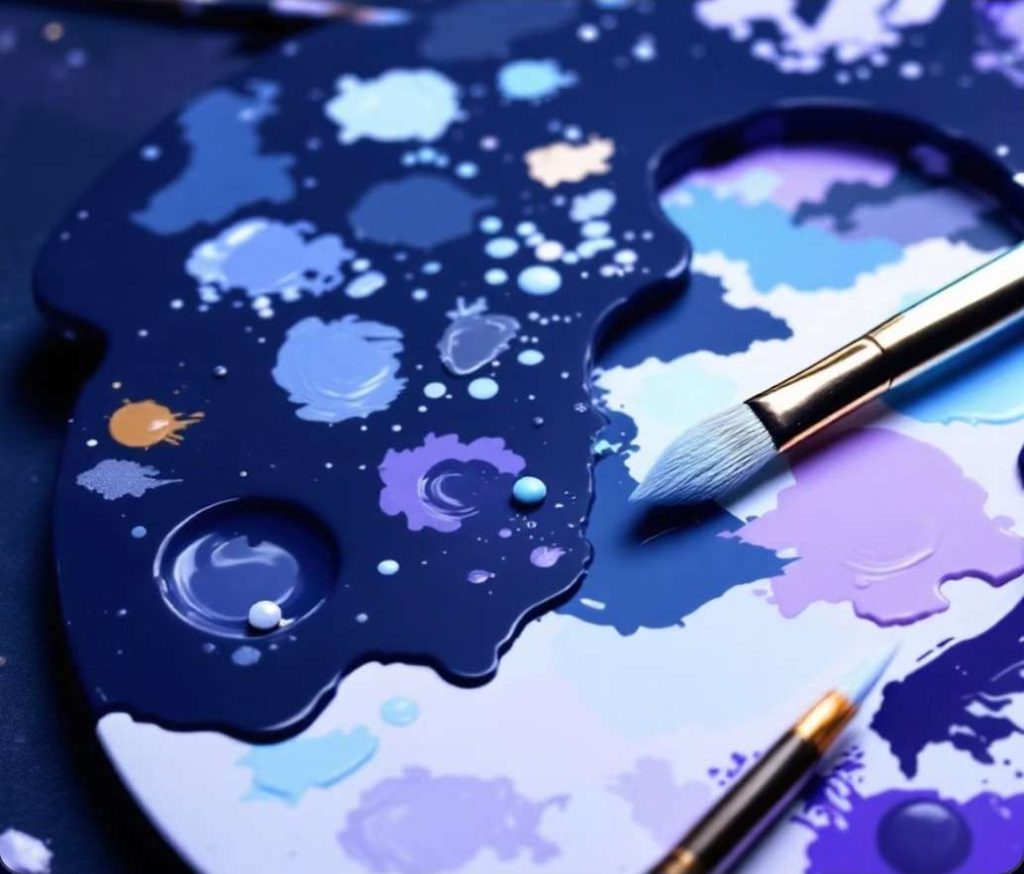How to make the walls of the house more beautiful with paint and patina?
Walls are one of the main elements of any interior space that significantly influence the overall décor and ambiance of a home. Not only do walls serve to divide spaces, but they also act as canvases for design and artistic expression within the home. Changing the appearance of walls can dramatically transform the feel of a space—especially when using innovative techniques like painting or patina finishing. These methods not only add a unique and attractive look to the walls but also greatly impact the atmosphere of the home, helping to create a relaxing, cozy, or even luxurious environment.
In this article, we will explore various wall painting and patina techniques that can significantly enhance the appearance of your home’s walls. These techniques can be applied in different ways depending on your taste, the style of your interior décor, and the function of each room.
Color Psychology in Interior Design
Colors have a profound effect on the human mind and mood. In interior design, colors are used as tools to create psychological impacts within spaces. They can evoke a range of emotions such as calmness, happiness, energy, or even discomfort. Therefore, choosing the right colors in each area of a home can have a powerful effect on the mood of both residents and guests.
Warm colors like red, orange, and yellow—often associated with warmth and energy—can bring a sense of vibrancy and liveliness into a space. These colors are best suited for social and communal areas such as the living room or dining room, where you want to establish a welcoming and energetic atmosphere.
On the other hand, cool colors like blue, green, and purple typically convey a sense of calm, tranquility, and freshness. These are ideal for more private areas like the bedroom or study, where creating a peaceful and relaxing environment is essential.
In addition, both natural and artificial lighting have a significant impact on how colors appear. Natural light can make colors look brighter and more vivid, while artificial light can alter their tone and perception. It’s important to consider the room’s lighting conditions when choosing your color palette.
Choosing the best color for each space
To achieve the best results in wall painting, it’s essential to choose colors that align with the function and purpose of each room. Below are some of the most suitable color suggestions for different areas of the home:
- Bedroom: The bedroom should offer a peaceful and relaxing atmosphere. Cool and soft tones such as light blue, pastel green, and earthy shades help create a calming environment. These colors can improve sleep quality and reduce stress.
- Living Room: As a space for gathering and hosting guests, the living room benefits from warm and elegant colors like red, gold, beige, or burgundy. These hues promote a sense of warmth and intimacy, while also highlighting decorative elements and making the space feel inviting and stylish.
- Kitchen: The kitchen is a place where people cook and share meals, so it’s ideal to use colors that stimulate appetite and energy. Warm tones such as yellow, orange, and red can create a lively, energetic atmosphere, perfect for a space full of activity.
- Bathroom and Toilet: These spaces require clean and fresh-looking colors to convey a sense of hygiene and brightness. Light shades like white, soft blue, light gray, and pale green are excellent choices for maintaining a clean and refreshing feel.

Types of wall paints and their characteristics
Choosing wall colors not only has a significant impact on the appearance of a space but also affects the durability and longevity of the walls. Below, we will explore different types of wall paints and their features:
- Oil-Based Paint: Oil-based paints are among the most common types of paints for walls. These paints are highly durable and provide a glossy finish, making them ideal for areas that require frequent cleaning, such as kitchens and bathrooms. Oil-based paints typically leave a noticeable sheen on the walls, but they take longer to dry.
- Plastic Paint: Plastic paints are known for their washability and quick drying properties. This type of paint is ideal for interior spaces that don’t require frequent touch-ups. In addition to being affordable, plastic paints are also resistant to temperature changes.
- Acrylic Paint: Acrylic paints are one of the best options for modern spaces. They dry quickly and offer high durability. These paints are also typically water-resistant and breathable, helping to prevent mold and mildew growth in damp environments.
- Nano and Waterproof Paints: These paints are made using nanotechnology and are specifically designed for areas exposed to moisture and pollution, such as bathrooms and kitchens. They typically feature waterproof and antibacterial properties, making them perfect for maintaining hygiene in these spaces.
Professional wall painting techniques
To achieve a professional result in wall painting, special techniques must be employed. Some of these techniques include:
- Using Rollers and Brushes: These tools are essential for achieving a uniform coating on walls. Rollers are used for quick and large-area painting, while brushes are used for more precise tasks, such as painting edges and corners.
- Two-Tone Painting: Using two different colors on a single wall can create a unique and interesting effect. This technique is often used to divide large spaces and create visual contrasts.
- Textured Painting: This technique, using special paints and tools, is designed to give the wall a three-dimensional, textured appearance. This type of painting can add an artistic and interesting effect to the interior space.
- Gradient Technique (Ombre): This technique uses various colors that gradually blend into one another, specifically used to create soft and beautiful color transitions.
What is patina and what is its use?
Patina work is an artistic technique where special paints and tools alter the surface of the wall to resemble materials like stone, wood, or other natural elements.
This technique gives the walls an aged and nostalgic appearance, adding a unique and artistic touch.
People use patina work in both traditional and modern architecture, and it is considered one of the best options for wall decoration. By using this technique, you can transform ordinary and simple walls into a piece of art that adds character and beauty to the home environment.
Types of patina and its styles
There are many different types of patina, each with its own unique characteristics. These techniques include:
Aged Patina: This type of patina gives walls an old and nostalgic appearance. By using dark colors and blending them with lighter shades, it creates an effect similar to aged wood or natural stone.
- Stone and Marble Patina Design: With this technique, designs similar to natural stone or marble can be created. This type of patina is suitable for classic and luxurious spaces.
Textured Patina: This type of patina uses paste and molds to create a raised, three-dimensional surface on the wall. This technique can add a unique and artistic effect.
- Metallic and Golden Patina: For spaces where you want to add a luxurious and opulent feel, metallic and golden patinas are the best choice. This type of patina adds shine and beauty to the walls.

Tools and materials needed for patination
Tools for Patina Work: To perform patina work, specific tools are required. These tools include brushes, spatulas, sponges, cloths, and special patina paints. The use of special powders and waxes is also essential for stabilizing and maintaining the designs.
Steps for applying patina on the wall
The Steps of Patina Work require precision and skill. These steps include preparing the wall, applying the base color, choosing the background, and executing the patina technique. While these steps can be time-consuming, the result will be well worth it.
The difference between patination and regular painting
Patina Work and Regular Painting have many differences. Patina work generally requires more expertise and has a greater impact on the interior space. In contrast, regular painting is quicker and simpler.
Maintenance and repairs after painting and patination
Painting and Patina Work on Walls require maintenance and care to always look fresh and beautiful. This section can include tips and correct methods for maintaining painted and patina-finished walls. Some of these tips include proper wall cleaning, preventing cracks and fading of colors, and methods for repairing any potential damage.
The difference between patination and painting in commercial and residential spaces
In commercial spaces such as stores, offices, and restaurants, the type of painting or patina technique chosen may differ from residential spaces. This section can address how the selection of color or patina technique can influence branding, customer experience, and the impact on the workspace environment. Additionally, it should explain what choices are better in residential spaces based on the specific needs of the residents.
Using painting and patina techniques in specific rooms
Some rooms in the house require more attention, and the selection of color and patina for these spaces should be done with more care. This section could include an examination of specific techniques for rooms like a children’s playroom, a gym, or a music room.
- Children’s Playroom: Use of cheerful colors and waterproof patinas to prevent color damage.
- Exercise or Yoga Room: Calming colors and natural patinas that create an inspiring atmosphere.
The effect of using natural colors in interior decoration
Natural colors such as leaf green, wood brown, and sky blue can create a close connection with nature, transforming the home environment into a calm and nature-inspired space. This section could discuss the reasons for the popularity of natural colors in decor, their advantages, and how to incorporate these colors into the interior design of the home.

Practical tips for choosing the right colors for exterior walls
Choosing the right color for the exterior walls of a home requires more attention, as these walls are exposed to natural elements such as sunlight, rain, and temperature changes. This section could include practical tips for selecting weather-resistant paints and advice on the aesthetics of the building’s exterior appearance.
The effect of colors and patinas in creating a smaller or larger space
Choosing colors and patina techniques can have a significant impact on the perception of space. In this section, the effects of light or dark colors on making a space appear smaller or larger can be discussed, along with techniques for altering the size and depth of a space using color and patina.
Using colors and patina in different decoration styles
Each interior design style has its own unique features, which can be emphasized through colors and patina techniques. This section can introduce the appropriate colors and patinas for various styles, such as minimalism, rustic decor, industrial, modern, and classic.
Conclusion
Using color and patina techniques to decorate walls is a highly creative and effective method that can dramatically change the interior of a home. Choosing colors and patina techniques that match the space can create a unique, beautiful, and calming atmosphere.


